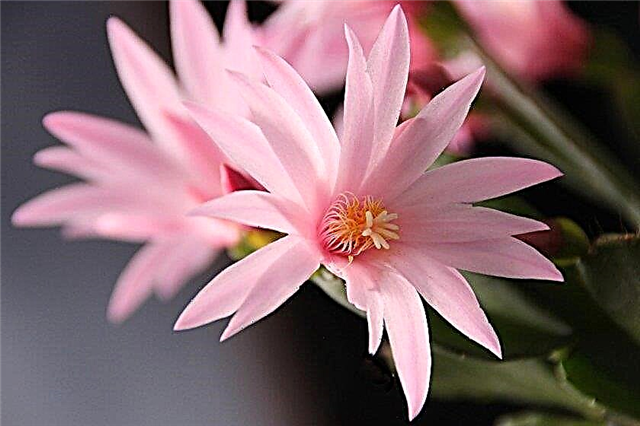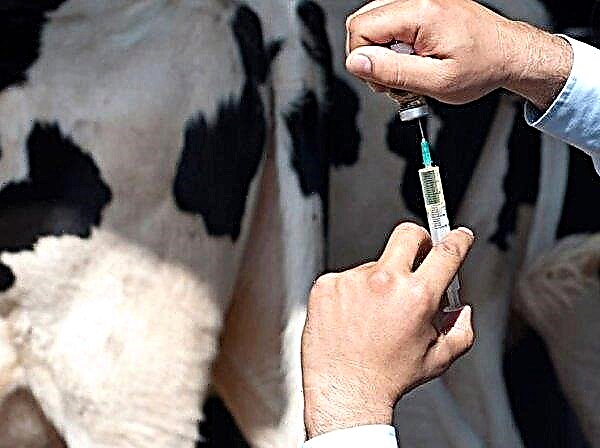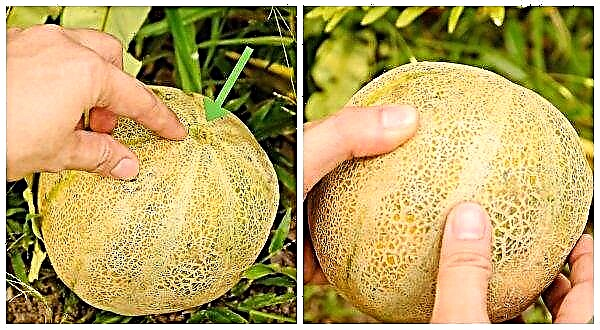Forest cactus ripsalidopsis is a moisture-loving tropical plant. This fact should be taken into account when growing it at home. How to care for this tropical plant, how to propagate it and prevent diseases, will be discussed in our material.
Botanical description of the plant
Ripsalidopsis is a cactus plant represented by an evergreen epiphytic form. The bush consists of several shoots, divided into 4-6 segments 3 cm long, flat or ribbed. The color of the shoots can vary from bright green to red. At the end of the shoots there are single thorns.
Important! During the flowering period, ripsalidopsis can not be rotated and rearranged to another place, otherwise it will lose buds.
The flowering time of the cactus often coincides with the beginning of the Easter week (end of March - May), so the plant received the second name "Easter egg". The flowering phase lasts 2 months. At the ends of the last segments inflorescences are formed, consisting of 2-3 flowers. Depending on the variety, their color varies from snow-white to burgundy. After pollination, berries are formed in place of the flowers.
Main types
The most popular varieties of ripsalidopsis include:
- Gartner - segments are large, 7 cm long, with wavy edges, have a slightly purple hue, red bell-shaped flowers look spectacular on hanging shoots.

- Pink - pink flowers are formed on compact bushes, resembling stars in shape.

- Aurigo Orange - characterized by drooping shoots with small segments. It enters the flowering phase later than the other varieties. The flowers are large, bright orange star-shaped.

- Andromeda - differs in strong bushiness. The flowering phase lasts 3 months, the flowers are painted in bright pink.

- King's dream - the shoots of the plant hang with large segments, which allows you to grow it like an ampelous plant. The flowers are bright pink with an orange border.

- White magic - compact bush with medium-sized thickened segments, snow-white flowers.

Growing conditions
Ripsalidopsis is a rather capricious culture, especially with regard to humidity and temperature. Non-compliance with the temperature regime can cause a lack of flowering.
Placement and lighting
These cacti need plentiful diffused lighting and high-quality shading from direct sunlight. It is better to place them on the eastern and western windowsills. In the summer, you can move the container with ripsalidopsisom to the balcony or to the garden. This will help increase his immunity.
Did you know? In Mexico, a candy cactus is growing, from which an exquisite treat is made. Its candied slices taste like melon.
Temperature mode
In order for the plant to bloom, the temperature must be kept at + 20 ℃ in the room. In summer, an increase in temperature up to + 25 ℃ is permissible. Since September, the temperature is gradually reduced, bringing to winter up to +10 ... + 12 ℃.
Air humidity
Plants normally develop only at high humidity - at least 60%. In the summer, they are placed over pallets with wet sand. So that the bottom of the pot does not touch the water, the slats are laid on the pallet, and a flower is placed on them. A simpler option is to place an air humidifier near the plants. When switching to winter mode, spraying is stopped, and the pots are rearranged in empty pallets.
Home Care
In order for the cultivation of the Easter egg to be successful, he needs to organize the right care, involving the implementation of basic agricultural activities.
Watering
The soil in the pot should be constantly moistened, but not swampy. Intensive watering of plants is required only during the flowering period. Water at room temperature (about +18 ... + 20 ℃) is sprayed from the coarse spray directly on the shoots, making sure that moisture does not get on the buds. So the liquid will flow down the shoots, washing off the dust from them, and penetrate the soil, evenly distributed over all its layers.
Did you know? The height of the smallest cactus — blossomfeldia — is only 1 cm, and the highest - giant cereus - 25 m.
The frequency of watering is on average 2 times a week, provided that the plants are located above trays with wet sand, and in winter - once every 10-14 days. Before entering the flowering phase, the Easter egg contains 3-4 weeks without watering in a shaded place. With the advent of buds, the flower is rearranged to a constant place, they provide optimal temperature conditions and enhanced watering.
Top dressing
Top dressing begins to be applied from the moment buds appear, 2 times a month. The last top dressing is made at the end of August. You need to use standard fertilizers for cacti with a minimum nitrogen content. The permissible content of this element in the fertilizer is 5%.
Feeding can also be prepared independently by mixing in 2.5 liters of water:
- calcium sulfate - 0.5 g;
- magnesium sulfate - 0.5 g;
- potassium nitrogen - 1 g;
- iron sulfate - 0.25 g;
- superphosphate - 0.25 g.

Pruning
Forming pruning begins to be carried out in the third year of plant life, when the shoots are stretched and become hanging, and the middle of the bush is exposed. A slice is made along the boundary of the segment, shortening it to the desired length. The procedure allows you to create a beautiful neat bush and get planting material for reproduction.
Transfer
Transplantation can be carried out before the appearance of buds - in February, or after flowering - in June-July. Plants under the age of 3 years are transplanted every year, increasing the diameter of the pot by 2-3 cm, adult cacti dive once every 3 years. The root system of ripsalidopsis is superficial, so the pot should be wide and shallow. A transplant involves the complete replacement of an earthen coma.
Soil requirements:
- acidity - not higher than 6 pH;
- structure - loose, with large inclusions of organic matter.
It is better to prepare the soil mixture yourself.
To do this, mix in a ratio of 1: 2: 1: 0.5: 0.25:
- leaf-sod land with clay not exceeding 5%;
- compost;
- fine gravel;
- charcoal;
- superphosphate.
Important! After transplanting, the plant should not be watered and fed for a week.
Step-by-step transplant instructions:
- Water the plant a couple of hours before the manipulation.
- Disinfect the planting container with furatsilin solution (1 tablet per 50 ml of boiling water).
- Place 1 cm of expanded clay on the bottom of the pot.
- Roast the soil for 20 minutes in an oven at a temperature of + 50 ℃.
- After cooling the soil, fill the pot with 75%.
- Carefully remove the plant from the old tank, clean the roots from the ground.
- Carefully inspect the rhizome, if necessary, remove dead and rotten elements.
- Dip the roots for 10 minutes in the cooled solution of furatsilin.
- Place the roots on the ground in a new pot and sprinkle with earth.
- Leave the pot for 3-4 days in a darkened room.
Video: Ripsalidopsis transplant
How to propagate
At home, the propagation of ripsalidopsis is carried out in 3 ways:
- cuttings;
- vaccination;
- seeds.
Cuttings
It is convenient to propagate by cuttings plants of three years of age during the period of forming pruning. Having separated the apical shoots, they are slightly dried and placed in small containers with a mixture of peat and sand at a distance of 5 cm from each other. After 3 weeks, you can transplant into separate containers of 3-4 shoots.
Vaccinated
Vaccination is a breeding method that most accurately reflects the natural conditions for the growth of ripsalidopsis. Manipulations are carried out in the summer. As a stock, peresius prickly is used.
Step-by-step instruction:
- Free the branched part of the pereskia from the foliage.
- With a clean, sharp tool, split at the junction.
- Ripsalidopsis cuttings containing 2-3 segments, sharpen and place in the cleft.
- Lock the scions with a needle.
- Cover the crevice with a bandage moistened with a solution of ash.
- Fix everything with a band-aid.
Important! Late blight develops as a result of the spread of the fungus, which may not manifest itself for a long time, and begin to progress only in the presence of favorable conditions. In this regard, plants that have been sick with Fusarium cannot be used for reproduction.
Seeds
To get seeds at home, you need 2 ripsalidopsis, entering simultaneously into the flowering phase. From one plant to another with a cotton swab or brush, you need to transfer pollen. Seeds can only be obtained when the berry dries and wrinkles. Planting seeds can be carried out at any convenient time for the grower - the seeds retain the ability to germinate for 2 years. Planting is carried out in mini-greenhouses. For germination, leaf-sod ground and sand are mixed in equal proportions. The easiest way to sow seeds in special cassettes. Filling the containers with soil, the seeds are laid on the surface and covered with sand, slightly moistened with a spray bottle and cover plantings with polyethylene. Then the containers are put into a darkened room, where the temperature is maintained within +23 ... + 25 ℃. Periodically, planting should be aired to prevent mold. When sprouts appear, the containers are rearranged in a well-lit room. After the sprouts reach a height of 10 cm, they are dived in 4–5 pieces into separate containers.
Filling the containers with soil, the seeds are laid on the surface and covered with sand, slightly moistened with a spray bottle and cover plantings with polyethylene. Then the containers are put into a darkened room, where the temperature is maintained within +23 ... + 25 ℃. Periodically, planting should be aired to prevent mold. When sprouts appear, the containers are rearranged in a well-lit room. After the sprouts reach a height of 10 cm, they are dived in 4–5 pieces into separate containers.
Growing difficulties
Any violation of the regime of agricultural activities and microclimatic conditions during the cultivation of ripsalidopsis leads to problems with the development of plants. Most often, flower growers are faced with a lack of flowering and the spread of pests.
Why does not bloom
Ripsalidopsis may not bloom for several reasons:
- lack of nutrition during the growing season - feed plants 2 times a month with fertilizers containing potassium and phosphorus;
- excess nitrogen - add soil to the pot, add 3 g of dolomite flour per plant, if yellowing of the shoots, carry out an emergency transplant with 3 g of potassium monophosphate in the soil.
Diseases and Pests
Due to increased soil moisture, if the feeding regimen is not observed, the following fungal diseases may appear:
Among the pests for ripsalidopsis are dangerous:
- spider mite - treat the leaves with a 3% solution of Bordeaux liquid 2 times with an interval of 10 days;
- scale shield - remove insects with a wet cotton swab, conduct a three-fold treatment with Fitoferm according to the instructions;
- mealybug - to eliminate it, you can also use Fitoverm.
Signs and superstitions
There are several signs and superstitions associated with the Easter cactus:
- If ripsalidopsis bloomed on Easter - the family will have luck and prosperity.
- For lonely girls, the beginning of the flowering of a cactus, coinciding with Easter, promises a fateful meeting.
- If the plant dropped the buds, there is a black stripe ahead.
- Seeing a flowering Easter egg in a dream is good luck and profit.
 When growing ripsalidopsis, the main task of the grower is to create a comfortable microclimate in the room and follow the elementary rules of cultivation, given the origin of this plant. Easter cactus requires especially careful care during the flowering period.
When growing ripsalidopsis, the main task of the grower is to create a comfortable microclimate in the room and follow the elementary rules of cultivation, given the origin of this plant. Easter cactus requires especially careful care during the flowering period.


















